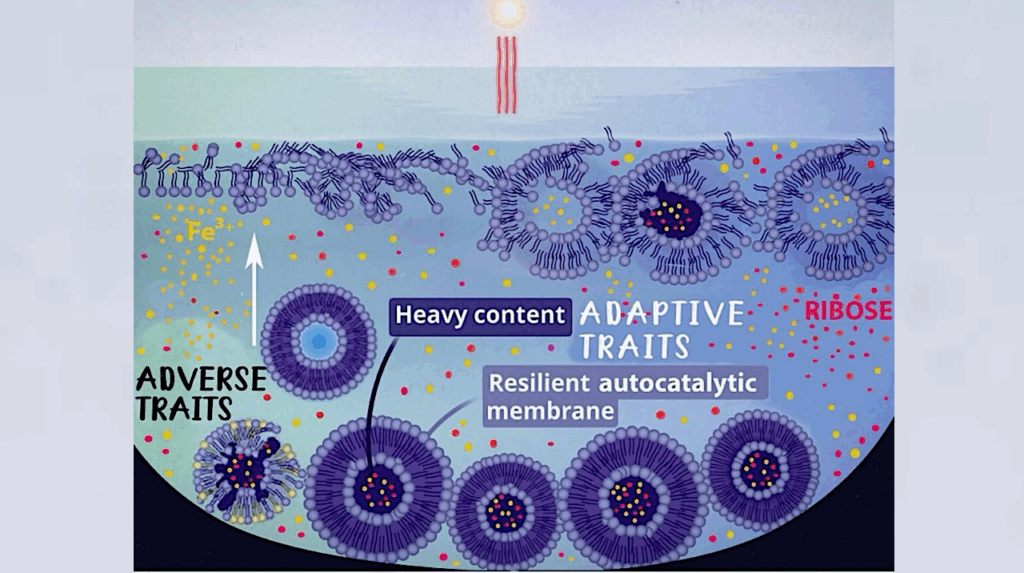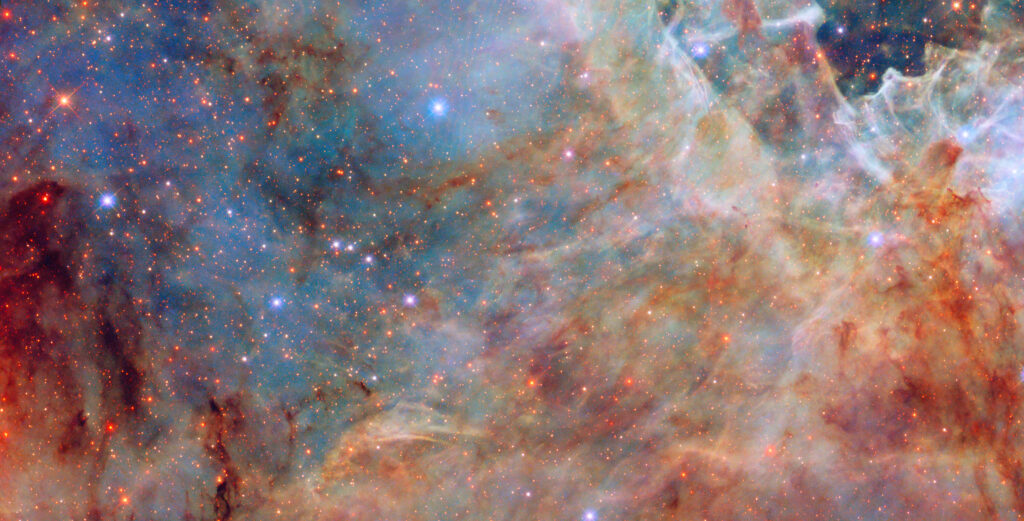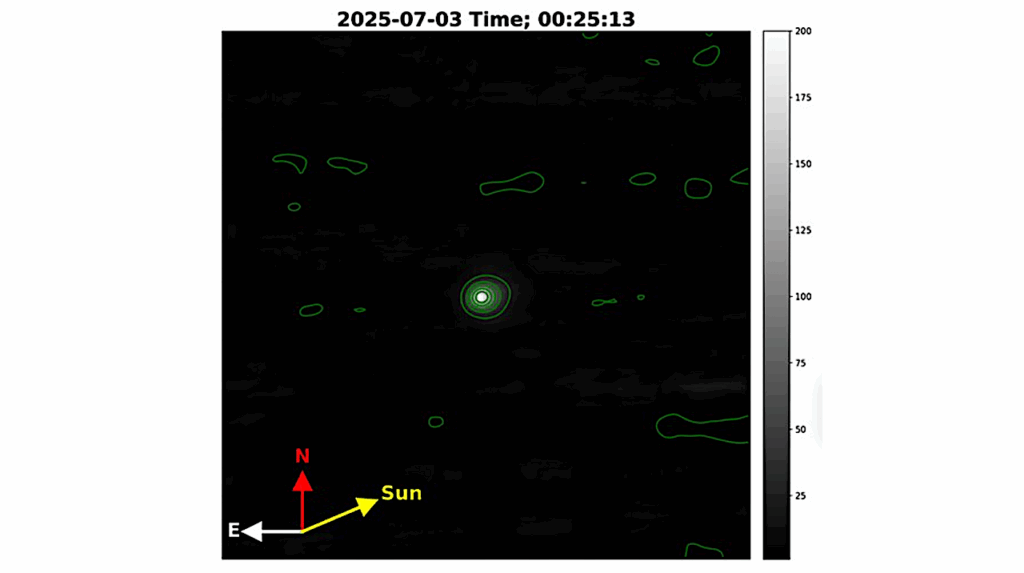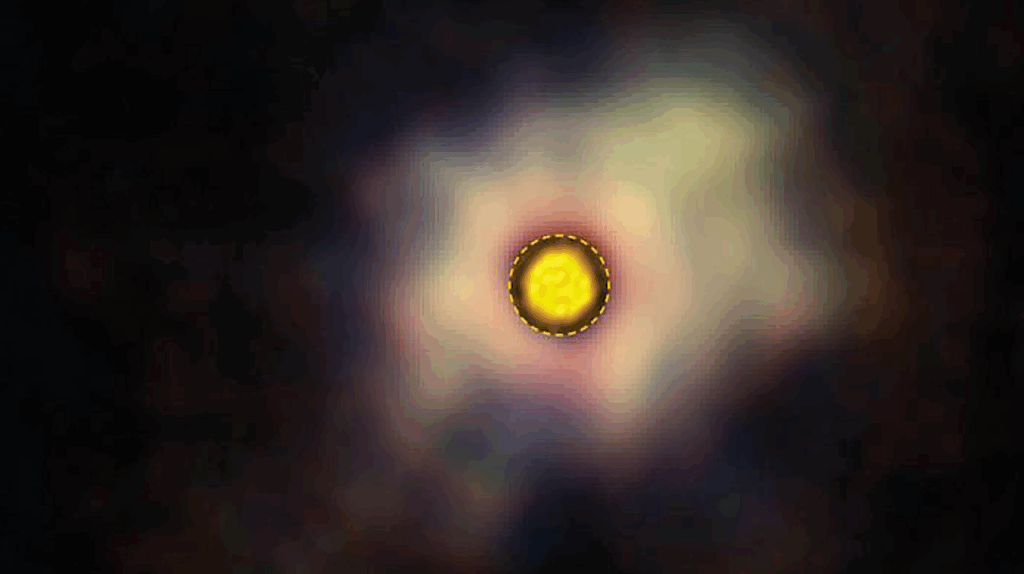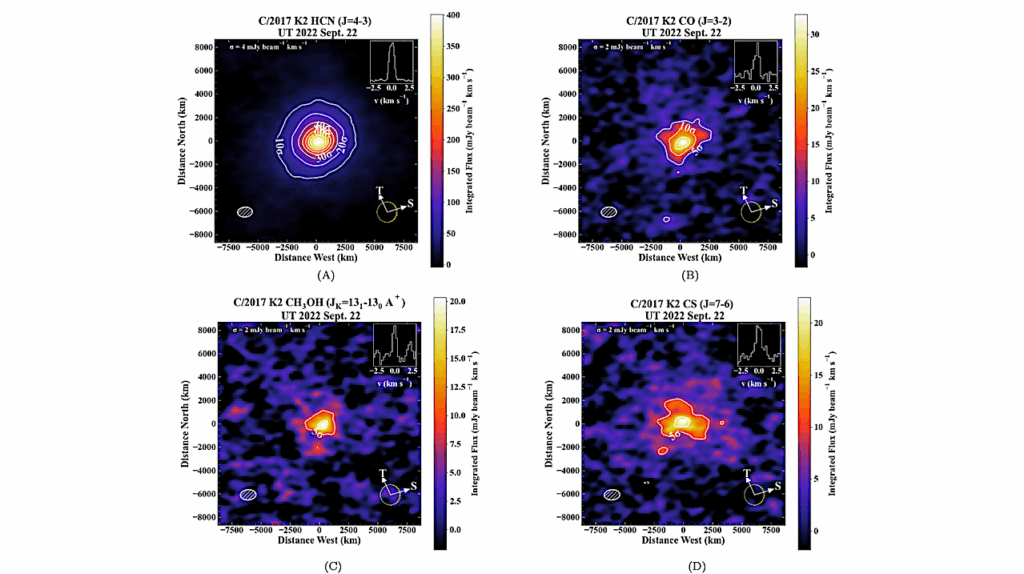PDS 70b Shows Stellar-like Carbon-to-Oxygen Ratio
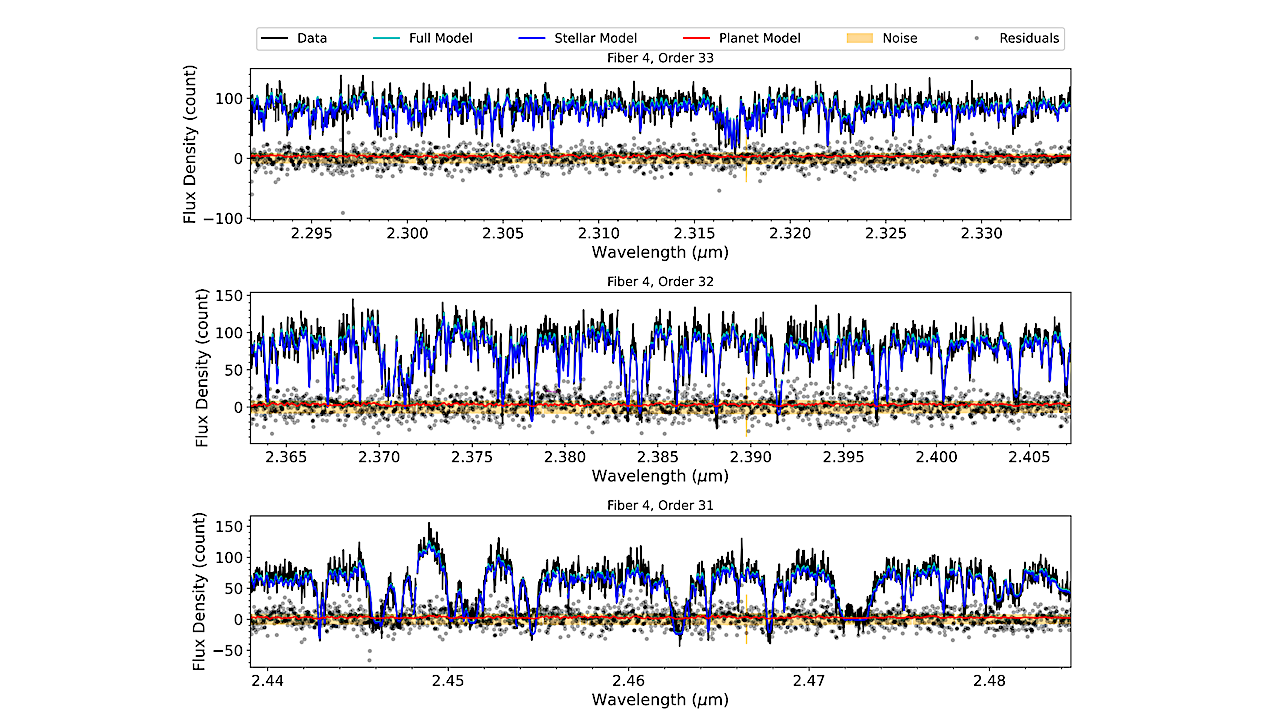
The ∼5 Myr PDS 70 is the only known system with protoplanets residing in the cavity of the circumstellar disk from which they formed, ideal for studying exoplanet formation and evolution within its natal environment.
Here we report the first spin constraint and C/O measurement of PDS 70b from Keck/KPIC high-resolution spectroscopy. We detected CO (3.8 σ) and H2O (3.5 σ) molecules in the PDS 70b atmosphere via cross-correlation, with a combined CO and H2O template detection significance of 4.2 σ.
Our forward model fits, using BT-Settl model grids, provide an upper limit for the spin-rate of PDS 70b (<29 km s−1). The atmospheric retrievals constrain the PDS 70b C/O ratio to 0.28+0.20−0.12 (<0.63 under 95% confidence level) and a metallicity [C/H] of −0.2+0.8−0.5 dex, consistent with that of its host star.
The following scenarios can explain our measured C/O of PDS 70b in contrast with that of the gas-rich outer disk (for which C/O ≳ 1). First, the bulk composition of PDS 70b might be dominated by dust+ice aggregates rather than disk gas. Another possible explanation is that the disk became carbon-enriched after PDS 70b was formed, as predicted in models of disk chemical evolution and as observed in both very low mass star and older disk systems with JWST/MIRI.
Because PDS 70b continues to accrete and its chemical evolution is not yet complete, more sophisticated modeling of the planet and the disk, and higher quality observations of PDS 70b (and possibly PDS 70c), are necessary to validate these scenarios.
Chih-Chun Hsu, Jason J. Wang, Geoffrey A. Blake, Jerry W. Xuan, Yapeng Zhang, Jean-Baptiste Ruffio, Katelyn Horstman, Julianne Cronin, Ben Sappey, Yinzi Xin, Luke Finnerty, Daniel Echeverri, Dimitri Mawet, Nemanja Jovanovic, Clarissa R. Do Ó, Ashley Baker, Randall Bartos, Benjamin Calvin, Sylvain Cetre, Jacques-Robert Delorme, Gregory W. Doppmann, Michael P. Fitzgerald, Joshua Liberman, Ronald A. López, Evan Morris, Jacklyn Pezzato-Rovner, Tobias Schofield, Andrew Skemer, J. Kent Wallace, Ji Wang
Comments: Accepted to ApJ Letters; 15 pages, 3 figures
Subjects: Earth and Planetary Astrophysics (astro-ph.EP); Solar and Stellar Astrophysics (astro-ph.SR)
Cite as: arXiv:2411.15117 [astro-ph.EP] (or arXiv:2411.15117v1 [astro-ph.EP] for this version)
https://doi.org/10.48550/arXiv.2411.15117
Focus to learn more
Submission history
From: Chih-Chun Hsu
[v1] Fri, 22 Nov 2024 18:33:52 UTC (890 KB)
https://arxiv.org/abs/2411.15117
Astrobiology, Astrochemistry,


